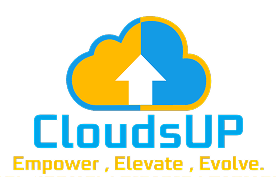Visualizing data is a powerful way to gain insights and make informed decisions. In Oracle JD
Edwards (JDE), you can leverage Oracle JET (JavaScript Extension Toolkit) to create
interactive and visually appealing graphs. One common use case is creating a JET graph to
display held sales orders, which helps businesses monitor and manage order processing
bottlenecks effectively.
In this blog, we’ll walk you through the steps to create a JET graph for held sales orders in
JDE, complete with code snippets for developers. By the end, you’ll have a clear
understanding of how to implement this feature and enhance your JDE applications. And if
you need help setting it up, we’re here to assist!
What Are Held Sales Orders in JDE?
Held sales orders are orders that are temporarily on hold due to various reasons, such as
credit issues, pricing discrepancies, or approval requirements. Monitoring these orders is
crucial for ensuring smooth order processing and minimizing delays.
Using JET graphs, you can visualize held sales orders by categories such as hold codes, order
types, or customers, making it easier to identify trends and take corrective actions.
Why Use Oracle JET for Graphs in JDE?
Oracle JET is a collection of open-source JavaScript libraries designed for building advanced
data visualizations and responsive web applications. It integrates seamlessly with JD
Edwards EnterpriseOne and offers:
- Interactive Visualizations: Dynamic graphs and charts for better data analysis.
- Customizability: Tailor graphs to meet specific business needs.
- Ease of Integration: Works natively with JDE’s UX One framework.
Steps to Create a JET Graph for Held Sales Orders
1. Identify the Data Source
The first step is to identify the table or view in JDE that contains held sales order data. Typically, the Sales Order Header (F4201) and Sales Order Detail (F4211) tables are used. The Order Hold Codes (F4209) table provides information about held orders.
You can use a query to fetch the required data. For example:
SELECT
SHDOCO AS OrderNumber,
SHAN8 AS CustomerNumber,
SHHOLD AS HoldCode,
COUNT(*) AS TotalOrders
FROM
F4209
WHERE
SHHOLD IS NOT NULL
GROUP BY
SHHOLD, SHDOCO, SHAN8;
2. Create a JET Graph Application
JET graphs are typically implemented in EnterpriseOne Pages or UX One. Here’s how to
create a JET graph:
- Define the Data Service: Use JDE’s orchestrations or custom APIs to expose the held
sales order data. - Create a JET Module: Use Oracle JET to define the graph component.
3. Write the JET Graph Code
Below is an example of a JET bar chart to display held sales orders by hold code.
define(['ojs/ojcore', 'knockout', 'ojs/ojchart'], function (oj, ko) {
function HeldSalesOrdersViewModel() {
var self = this;
// Sample data for held sales orders
self.heldOrdersData = ko.observableArray([
{ holdCode: 'C1', totalOrders: 15 },
{ holdCode: 'C2', totalOrders: 10 },
{ holdCode: 'C3', totalOrders: 8 }
]);
// Map data to JET chart format
self.chartSeries = ko.observableArray(
self.heldOrdersData().map(function (order) {
return { name: order.holdCode, items: [order.totalOrders] };
})
);
self.chartGroups
4. Add the JET Graph to a JDE Page
To integrate the graph into a JDE page, use the EnterpriseOne Page Composer or a custom
UX One page. Add the JET graph as a widget and bind it to the data service.
Here’s an example of the HTML structure for the graph:
5. Test and Deploy
- Test the graph with real data to ensure it displays held sales orders correctly.
- Deploy the graph to your JDE environment and make it accessible to users.
When to Use JET Graphs for Held Sales Orders
JET graphs are ideal when:
- You need to visualize trends in held orders over time.
- You want to categorize held orders by hold codes, customers, or order types.
- You aim to provide actionable insights to users for resolving order holds.
Why Choose Us for JDE Customizations?
Creating JET graphs in JD Edwards requires a mix of technical expertise and business
understanding. While the steps above provide a roadmap, implementing this in a live
environment can be challenging. That’s where we come in.
At CloudsUP Solutions, we specialize in JD Edwards customizations, including creating
interactive dashboards and visualizations. Whether you need help setting up JET graphs,
optimizing orchestrations, or integrating data sources, our team is here to assist.
Contact us today to take your JDE applications to the next level with powerful visualizations
and insights!
